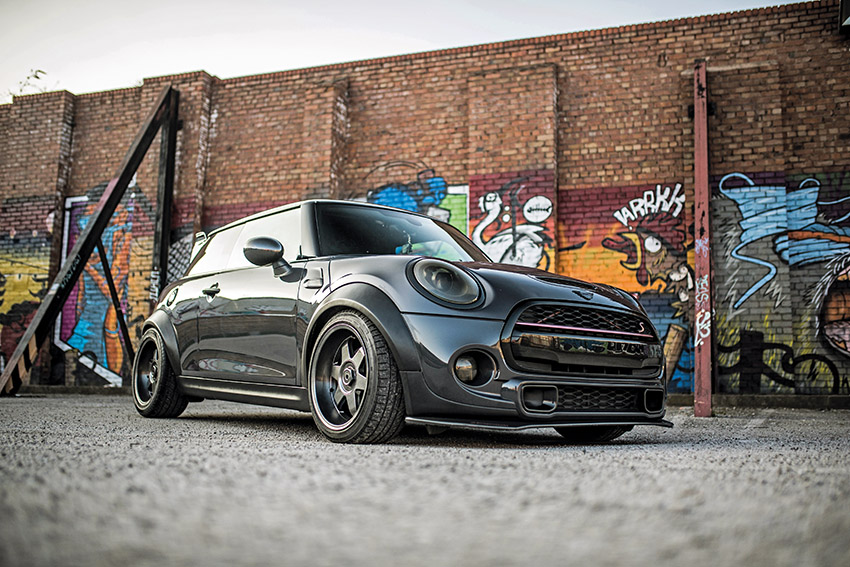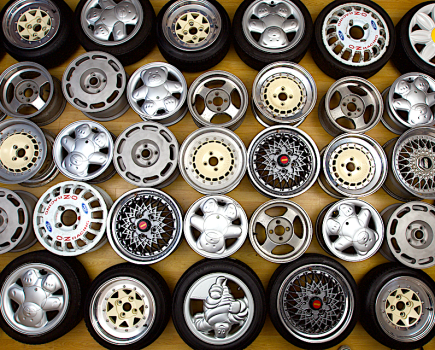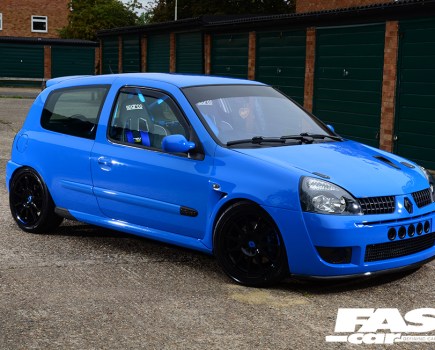This Mini Cooper S F56 tuning guide is packed full of all the info you need when modifying Mini’s most recent hot hatch.
There’s an all-new Mini hatch due this year (2024), and no doubt a Cooper S replacement in due course. So, that means the current F56 Cooper S hatches days are numbered. One of the hottest hatches out of the box, the F56 Mini Cooper S has 10 years of proven longevity and is easily improved with a wide variety of upgrades available in the aftermarket arena.
Yes, the current Mini line-up includes higher performance versions, but the Cooper S is the model that responds best to tweaks in the right places. So, that’s the model we’ll be focusing on in this tuning guide.
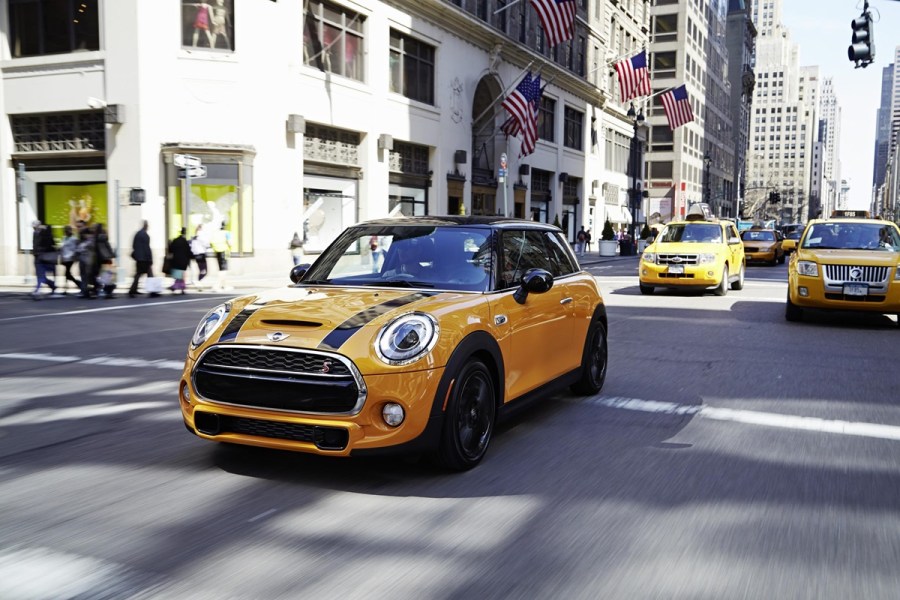
Biggest Mini revelation since the launch of the R50 in 2001
The F56 was the fastest third-generation Mini launched in both the UK and U.S. in March 2014. It was available alongside the warm Cooper, plus frugal Cooper D diesel models for the UK market.
In F56 form, power for this Cooper S was boosted to 192hp, with a torquey 206lb ft and a keen 6.8 second 0-62mph acceleration time. Yet, despite all this performance, the bespoke 2.0-litre Twinpower turbo gasoline engine’s 49.6mpg combined figure meant owners spent more time driving than filling up!
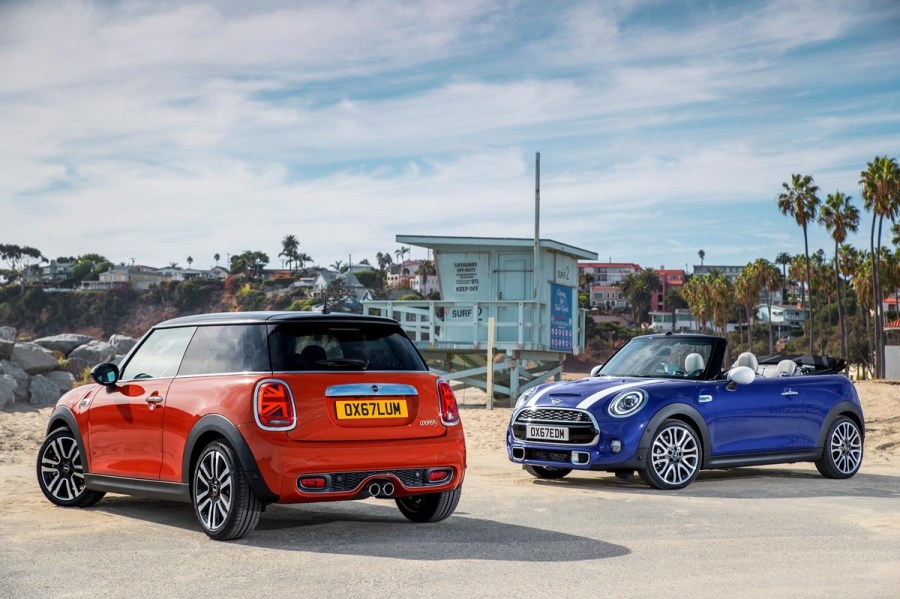
After four-years, in 2018, the F56 Mini F56 received a freshen up, in the form of the LCI facelift. This equaled trim changes, new exterior color choices, brighter front LED headlights with circular ‘halo’ DRLs and distinctive Union Jack-style rear lights.
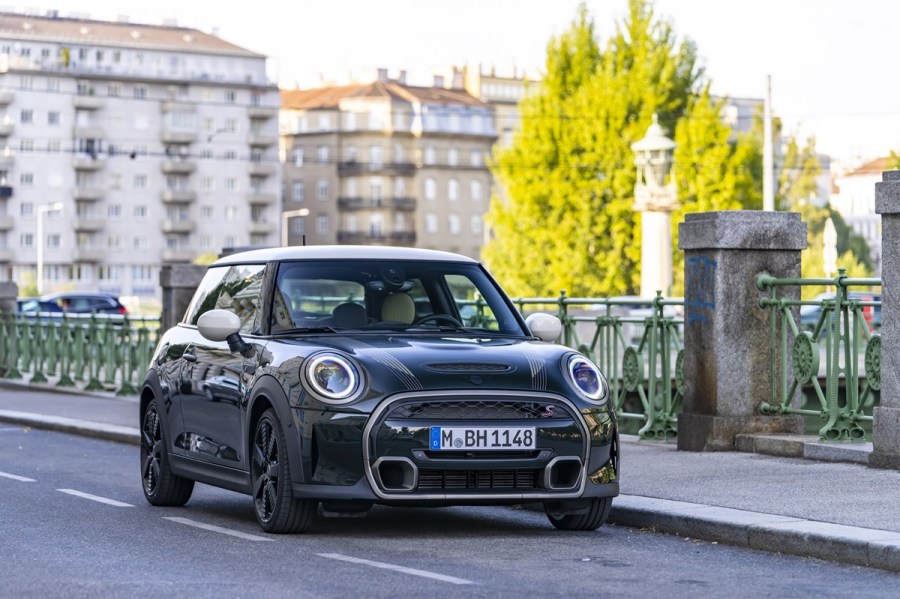
Unusually, the F56 didn’t just receive one facelift, as it received its second in the Spring of 2021. This time, on top of more trim and color changes, there were new bumpers and grille, designed to preview a new design direction for the Mini brand.

F56 Mini Cooper S engine tuning
Let’s start with engine breathing, as a freer flowing engine makes more horsepower, and that’s a fact. With so many Mini specialists, there are many different alternatives, but one in particular that seems well-regarded by both tuners and owners, is the CravenSpeed one. Priced at $499 bucks, it works replacing all the standard plastic induction pipes, plus the air box with machined aluminum pipes and a K&N cone air filter. The filter alone, maximizes surface area and improving air flow.
If you’ve fitted an induction kit and an exhaust (we’ll talk about that below), the next performance part you’ll want to upgrade to increase the power on an F56 Cooper S, is the front-mounted intercooler, located at the bottom of the chunky front air dam. It works by cooling the boosted air, the result being cooler charge temperatures and subsequently more power and torque. Prices start at over $700 bucks for the Air Tech item.
To make the most of some, or all of the bolt-on engine parts that we’ve already talked about, the next mod is a remap. For example, a Stage 3 tune for a Cooper equals 285hp, yet costs just over $400 bucks.
At the top end, for ultimate power, you can fit a hybrid turbo, but at the same time you’ll need to forge the bottom end to be safe.

Exhaust tuning
That’s not the end of the breathing improvements that can be made to the Cooper S’s Twinpower 2.0-litre engine. The other is the exhaust. A standard fit John Cooper Works exhausts offers more pops and bangs, but another OEM+ option available for pre-LCI facelift models, was the JCW Pro exhaust. Some specialists still have stock, but you’ll be paying around $2,052 bucks for the privilege. What makes this exhaust clever, was that it had a Bluetooth operated value to make it louder. But, if you like the idea of a valved Bluetooth-operated alternative exhaust, there’s a Remus alternative for $2,144 bucks.
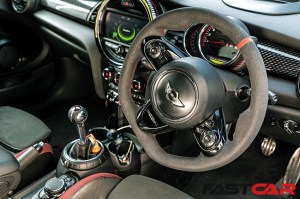
Transmission
The F56 Mini Cooper S was available with the choice of six-speed manual and six-speed automatic transmissions. Clutches and the manual transmission generally don’t give trouble, but synchros and clutches can fail on tuned cars. So, the clutch in particular, should be upgraded to a racing item.
Despite nearly 200bhp going through the F56 Mini Cooper S front wheels, the third-generation Mini isn’t fitted with a limited slip differential – instead there’s a clever torque-vectoring traction control system, that’s designed to stop the front wheels spinning. However, even as standard, the Cooper S can struggle getting its power down – and adding more power will make this worse. So, in our opinion, if you’re planning on fitting any of the performance parts listed above, we’d suggest fitting a proper Quaife limited-slip differential, the same as was fitted to the JCW Challenge limited edition. It is priced at $1,007 bucks.
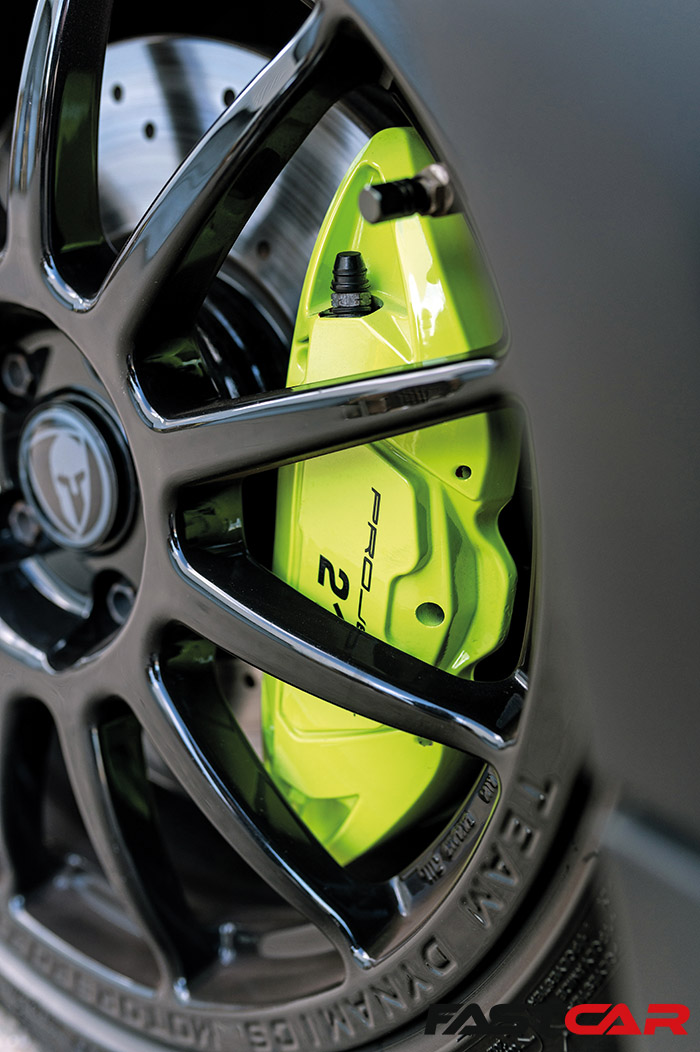
Brake upgrades
The standard F56 Mini Cooper S brake set up is good as standard, but if you’re going for some or all of the engine upgrades we’ve mentioned above, you’ll need to make some changes. Even a set of upgraded brake pads can make a difference, but a set of JCW Brembo calipers are a worthwhile upgrade. They cost $1,957 bucks new and $400 secondhand.
Like the engine tuning, you can go even further with the brake upgrades, with ‘big’ two-piece brakes kits, also from Brembo, priced at $3,287 bucks at specialists.

Suspension upgrades
One of the key Mini ownership attributes is the precise steering and entertaining handling. This is the result of standard MacPherson struts, coil springs, an anti-roll bar and the rear Z-axle.
The F56 Mini Cooper S might drive brilliantly, but its lofty standard stance is definitely not cool. This is easily sorted by a set of coilovers, which will not only equal sharper handling, thanks to the lower center of gravity, but look better with the wheels filling the arches. Prices for coilovers for this Mini start at around $818.
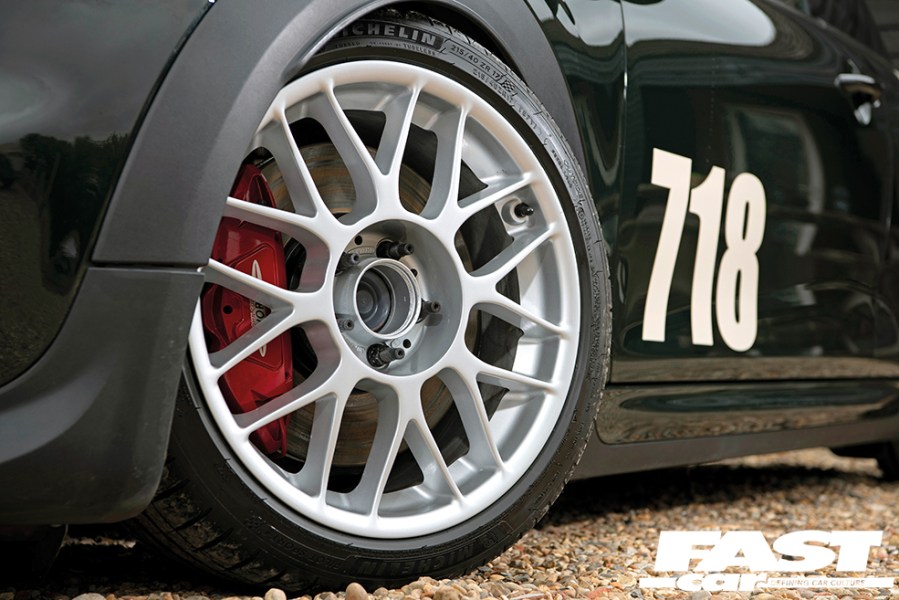
Wheel and tire upgrades
Optimum wheel size are 18s, where there’s a choice of OEM and aftermarket options. Watch the kerbs, as the biggest wheels are the most susceptible, and wheel damage could also affect the suspension alignment, which in turn will affect the Minis entertaining handling.
Also, F56 Minis are susceptible to tire choice – Pirelli tires are not recommended on the 18-inch wheels.
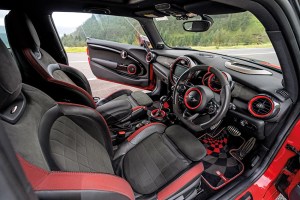
F56 Mini Cooper S interior upgrades
Interior quality, like the mechanicals, took a massive step forward with the third-generation F56 Mini. You only have to feel the soft-touch plastics and trim, to work out it is a match for any you’ll find in a BMW.
The F56 Mini might be 28mm longer, but that doesn’t mean there’s any more interior space, and rear access it is still tight.
Although drabbly trimmed as standard in cloth, the standard sports seats are comfortable and supportive. A simple upgrade, are the one-piece sports seats from the performance range-topper the JCW. Not only do they look sportier, they are more supportive, the trim is more luxurious, and they should just bolt straight in!
For something more serious, aftermarket buckets can also be fitted, with prices starting at $340 bucks.

F56 Mini Cooper S exterior upgrades
The F56 Mini Cooper S might share the same rounded curves, circular details and floating roof as the Frank Stephenson designed 2001 original. That is where the design similarities end, as the F56 is 4mm wider and 7mm taller, and in our opinion, isn’t as well proportioned.
You can identify the F56 Cooper S by the amount of front grilles – as there are meshed-style upper and lower front ones. At the side, there are color-coded side skirts, and at the back there’s a chunkier rear apron and more fake grilles, the expected center exit exhausts, and distinctive roof spoiler.
However, if you want to make your F56 Cooper S stand out more, the JCW came with a selection of bolt on aesthetic upgrades. Then, if you want to go further, there are plenty of OEM+ improvements.
There are wide-arch kits, splitters, and bigger wings for those who want to take the look to extremes.
Words by Martyn Collins.

